Anatomy of a CC License
15 License Types
Introduction
There are six different CC licenses, designed to help accommodate the diverse needs of creators while still using simple, standardized terms.
Learning Objectives
- Explain the CC license suite
- Describe the different CC license elements
Big Question – Why it Matters
Why are there so many different Creative Commons licenses?
There is no single Creative Commons license. The CC license suite (which includes the six CC licenses) and the CC0 public domain dedication offer creators a range of options. At first, all of these choices can appear daunting. But when you dig into the options, you will realize the spectrum of choices is fairly simple.
Personal Reflection – Why it Matters to You
Think about a piece of creative or academic work you made that you are particularly proud of. If you shared that work with others, would you have been okay with them adapting it or using it for commercial purposes? Why or why not?
Acquiring Essential Knowledge
Creative Commons licenses are standardized tools, but part of the vision is to provide a range of options for creators who are interested in sharing their works with the public rather than reserving all rights under copyright.
The four license elements—BY, SA, NC, and ND—combine to make up six different license options.
All of the licenses include the BY condition. In other words, all of the licenses require that the creator be attributed in connection with their work. Beyond that commonality, the licenses vary whether (1) commercial use of the work is permitted; and (2) whether the work can be adapted, and if so, on what terms.
The six licenses, from least to most restrictive in terms of the freedoms granted reusers, are:
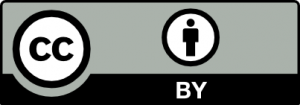
The Attribution license or “CC BY” allows people to use the work for any purpose (even commercially and even in modified form) as long as they give attribution to the creator.
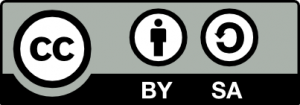 The Attribution-ShareAlike license or “BY-SA” allows people to use the work for any purpose (even commercially and even in modified form), as long as they give attribution to the creator and make any adaptations they share with others available under the same or a compatible license. This is CC’s version of a copyleft license, and is the license required for content uploaded to Wikipedia, for example.
The Attribution-ShareAlike license or “BY-SA” allows people to use the work for any purpose (even commercially and even in modified form), as long as they give attribution to the creator and make any adaptations they share with others available under the same or a compatible license. This is CC’s version of a copyleft license, and is the license required for content uploaded to Wikipedia, for example.
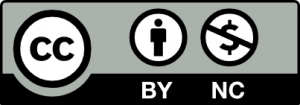 The Attribution-NonCommercial license or “BY-NC” allows people to use the work for noncommercial purposes only, and only as long as they give attribution to the creator.
The Attribution-NonCommercial license or “BY-NC” allows people to use the work for noncommercial purposes only, and only as long as they give attribution to the creator.
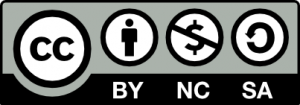 The Attribution-NonCommercial-ShareAlike license or “BY-NC-SA” allows people to use the work for noncommercial purposes only, and only as long as they give attribution to the creator and make any adaptations they share with others available under the same or a compatible license.
The Attribution-NonCommercial-ShareAlike license or “BY-NC-SA” allows people to use the work for noncommercial purposes only, and only as long as they give attribution to the creator and make any adaptations they share with others available under the same or a compatible license.
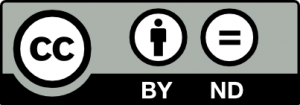 The Attribution-NoDerivatives license or “BY-ND” allows people to use the unadapted work for any purpose (even commercially), as long as they give attribution to the creator.
The Attribution-NoDerivatives license or “BY-ND” allows people to use the unadapted work for any purpose (even commercially), as long as they give attribution to the creator.
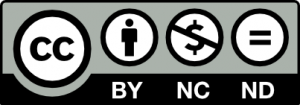 The Attribution-NonCommercial-NoDerivatives license or “BY-NC-ND” is the most restrictive license offered by CC. It allows people to use the unadapted work for noncommercial purposes only, and only as long as they give attribution to the licensor.
The Attribution-NonCommercial-NoDerivatives license or “BY-NC-ND” is the most restrictive license offered by CC. It allows people to use the unadapted work for noncommercial purposes only, and only as long as they give attribution to the licensor.
To really understand how the different license options work, let’s dig into the different license elements. Attribution is a part of all CC licenses, and we will dissect exactly what type of attribution is required in a later unit. For now, let’s focus on what makes the licenses different.
First, commercial vs. noncommercial use.
NonCommercial (“NC”) As we know, three of the licenses (BY-NC, BY-NC-SA, and BY-NC-ND) limit reuse of the work to noncommercial purposes only. In the legal code, a noncommercial purpose is defined as one that is “not primarily intended for or directed towards commercial advantage or monetary compensation.” This is intended to provide flexibility depending on the facts surrounding the reuse, without over specifying exact situations that could exclude some prohibited and some permitted reuses.
It’s important to note that CC’s definition of NC depends on the use, not the user. If you are a nonprofit or charitable organization, your use of an NC-licensed work could still run afoul of the NC restriction, and if you are a for-profit entity, your use of an NC-licensed work does not necessarily mean you have violated the term. For example, a nonprofit entity cannot sell another’s NC licensed work for a profit, and a for-profit may use an NC licensed work for non commercial purposes. Whether a use is commercial depends on the specifics of the situation. See our CC NonCommercial Interpretation page here for more information and examples.
Adaptations
The other differences between the licenses hinge on whether, and on what terms, reusers can adapt and then share the licensed work. The question of what constitutes an adaptation of a licensed work depends on applicable copyright law (for a reminder, see Unit 2). One of the exclusive rights granted to creators under copyright is the right to create adaptations of their works or, as they are called in some places, derivative works. (For example, creating a movie based on a book, or translating a book from one language to another.)
As a legal matter, at times it is tricky to determine exactly what is and is not an adaptation. Here are some handy rules about the licenses to keep in mind:
- Technical format-shifting (for example, converting a licensed work from a digital format to a physical copy) is not an adaptation regardless of what applicable copyright law may otherwise provide.
- Fixing minor problems with spelling or punctuation is not an adaptation.
- Syncing a musical work with a moving image is an adaptation regardless of what applicable copyright law may otherwise provide.
- Reproducing and putting works together into a collection is not an adaptation of the individual works. For example, combining stand-alone essays by several authors into an essay collection for use as an open textbook is a collection and not an adaptation. Most opencourseware is a collection of others’ open educational resources (OER).
- Including an image in connection with text, as in a blog post, a PowerPoint, or an article, does not create an adaptation unless the photo itself is adapted.
 NoDerivatives Two of the licenses (BY-ND and BY-NC-ND) prohibit reusers from sharing (i.e. distributing or making available) adaptations of the licensed work. To be clear, this means anyone may create adaptations of works under an ND license so long as they do not share the work with others in adapted form. This allows, among other things, organizations to engage in text and data mining without violating the ND term.
NoDerivatives Two of the licenses (BY-ND and BY-NC-ND) prohibit reusers from sharing (i.e. distributing or making available) adaptations of the licensed work. To be clear, this means anyone may create adaptations of works under an ND license so long as they do not share the work with others in adapted form. This allows, among other things, organizations to engage in text and data mining without violating the ND term.
 ShareAlike Two of the licenses (BY-SA and BY-NC-SA) require that if adaptations of the licensed work are shared, they must be made available under the same or a compatible license. For ShareAlike purposes, the list of compatible licenses is short. It includes later versions of the same license (e.g., BY-SA 4.0 is compatible with BY-SA 3.0) and a few non-CC licenses designated as compatible by Creative Commons (e.g., the Free Art License). You can read more about this here, but the most important thing to remember is that ShareAlike requires that if you share your adaptation, you must do so using the same or a compatible license.
ShareAlike Two of the licenses (BY-SA and BY-NC-SA) require that if adaptations of the licensed work are shared, they must be made available under the same or a compatible license. For ShareAlike purposes, the list of compatible licenses is short. It includes later versions of the same license (e.g., BY-SA 4.0 is compatible with BY-SA 3.0) and a few non-CC licenses designated as compatible by Creative Commons (e.g., the Free Art License). You can read more about this here, but the most important thing to remember is that ShareAlike requires that if you share your adaptation, you must do so using the same or a compatible license.
Public domain
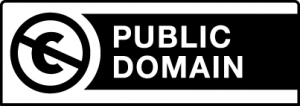
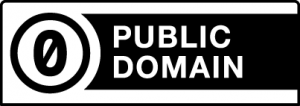
In addition to the CC license suite, Creative Commons also has an option for creators who want to take a “no rights reserved” approach and disclaim copyright entirely. This is CC0, the public domain dedication tool.
Like the CC licenses, CC0 (read “CC Zero”) uses the three-layer design—legal code, deed, and metadata.
The CC0 legal code also uses a three-pronged legal approach. Some countries do not allow creators to dedicate their work to the public domain through a waiver or abandonment of those rights, so CC0 includes a “fall back” license that allows anyone in the world to do anything with the work unconditionally. The fall back license comes into play when the waiver fails for any reason. And finally, in the rare instance that both the waiver and the “fall back” license are not enforceable, CC includes a promise by the person applying CC0 to their work that they will not assert copyright against reusers in a manner that interferes with their stated intention of surrendering all rights in the work.
Like the licenses, CC0 is a copyright tool, but it also covers a few additional rights beyond those covered by the CC licenses, such a non competition laws. From a reuse perspective, there still may be other rights that require clearance separately, such as trademark and patent rights, and third party rights in the work, such as publicity or privacy rights.
Final remarks
Creative Commons legal tools were designed to provide a solution to complicated laws in a standardized way, making them as easy as possible for non-lawyers to use and apply. Understanding the basic legal principles in this Unit will help you use the CC licenses and public domain tools more effectively.

